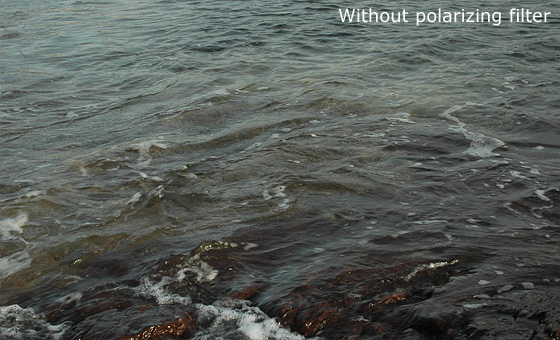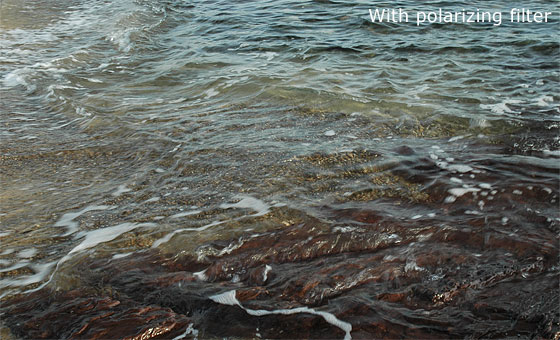Circular Polarizing Filters
Circular polarizing filters have been around for years, and still do a job for photographers that can't be replicated using Photoshop.The first question you might well ask is "what the heck is that?"
Well, a bit of science ... light comes at us from all directions. A polarizing filter has millions of microscopic 'blinds' embedded into it (think of a venetian blind, only a lot smaller!)
The blinds only allow light to enter at a certain angle - everything else is blocked out.
And the 'circular' bit? Well, imagine you could rotate those blinds - that's the circular bit. Those microscopic blinds start off horizontal (just like venetian blinds), and then you the photographer can rotate them so that they're vertical, or anywhere else in between.
That's one of the special qualities of circular polarizing filters - because they are circular, and they come with a screw mount that can rotate, you can rotate the 'blinds' to cut out light from a direction that you choose.
And so the next question could be why would you want to use one? Well ...
Circular polarizing filters have a few useful qualities
Things like:
- reducing reflections
- adding more contrast
- darkening skies
If you're at the beach, and you want to take a photo with water in it, you'll find there's a lot of reflections off of the surface of the sea.
That's because the light is being bounced off the surface of the water in all directions.
But, if you place a polarizing filter over the lens, you can cut out light from one direction, this will reduce the reflections, and this means you can see clearly through the water!
Have a look at the two photos below. I can't pretend they're my finest work, but they do clearly show the difference a circular polarizing filter makes:

In the first shot (above) the water is giving off lots of reflections. This makes it difficult to 'see through' the water.

And in the second photo here I've attached a polarizing filter to the lens and I've rotated it until it blocks out most of the light coming from the surface of the water
This allows us to photograph through the water and we can much more easily see the rocks and stones on the sea bed underneath.
So now that you know how to see through water...
What else can you do with it?
I'm glad you asked!
There are other uses for polarizing filters - they can improve contrast, they can make skies look bluer than you ever imagined.
other uses for the filter ⇒ ⇒ ⇒
